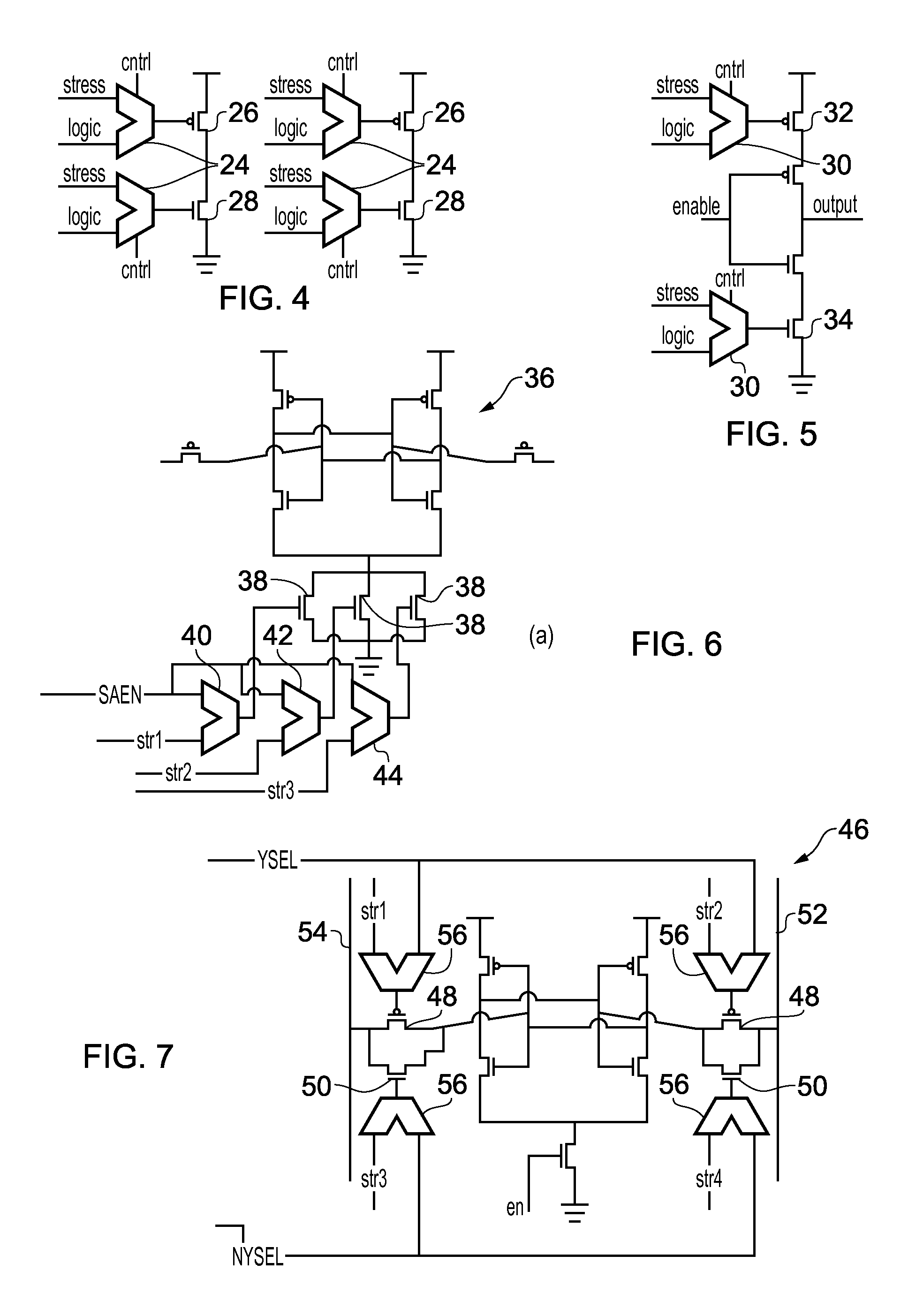Post fabrication tuning of an integrated circuit
a technology of integrated circuits and tuning techniques, applied in the direction of single output arrangements, pulse manipulation, electrical equipment, etc., can solve the problems of relatively coarse grain in tuning techniques, not applicable in all directions, etc., to improve the reliability and potential speed of operation, improve the matching speed of the pair of transistors, and improve the performance
- Summary
- Abstract
- Description
- Claims
- Application Information
AI Technical Summary
Benefits of technology
Problems solved by technology
Method used
Image
Examples
Embodiment Construction
[0049]FIG. 1 schematically illustrates an integrated circuit in the form of a memory 2. The memory includes a bit cell array 4, a row decoder 6 and sense amplifiers SA. A timing controller 8 generates timing signals which control the row decoder and, via a delay line 10, the enable signal (en) supplied to the sense amplifiers SA for reading the bit line pairs. Speed tuning circuitry 12 is coupled to both the delay line 10 and the sense amplifiers SA to apply a tuning voltage to transistors within the delay line 10 or the sense amplifiers SA so as to change their switching speed.
[0050]The normal operation of the memory 2 will use voltages for switching the gates of transistors within the sense amplifiers SA and the delay line 10 that are within a normal range of voltages. If the change in the speed of switching of any of those transistors is desired then the speed tuning circuit 12 during a tuning operation applies a tuning voltage outside of this normal range to the transistors so a...
PUM
 Login to View More
Login to View More Abstract
Description
Claims
Application Information
 Login to View More
Login to View More - R&D
- Intellectual Property
- Life Sciences
- Materials
- Tech Scout
- Unparalleled Data Quality
- Higher Quality Content
- 60% Fewer Hallucinations
Browse by: Latest US Patents, China's latest patents, Technical Efficacy Thesaurus, Application Domain, Technology Topic, Popular Technical Reports.
© 2025 PatSnap. All rights reserved.Legal|Privacy policy|Modern Slavery Act Transparency Statement|Sitemap|About US| Contact US: help@patsnap.com



